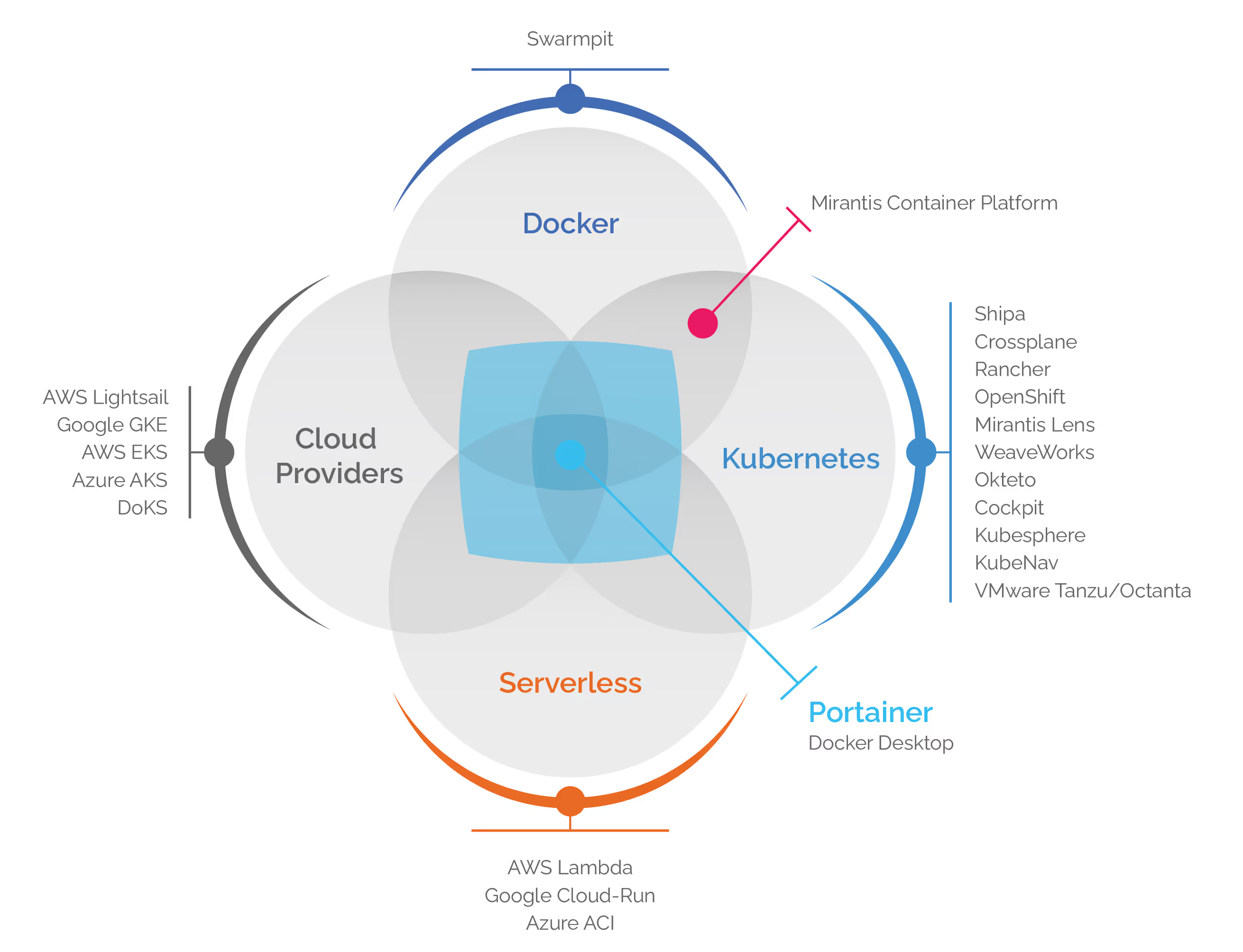We were humbled to discover this recent blog post, created by Hrittik Roy from p3r. The article delves into a users' point of view on Mirantis vs Portainer - features, community support, pricing, and ease of experimentation with these 2 tools.
A while ago, I came across a video about two types of people – one managing and writing lines and lines of code and the other using Portainer. Quite exciting, and back then, I started to compare the available GUI options in the market to get my bucks’ best value.
The Mirantis Kubernetes Engine (formerly Docker Enterprise/UCP) stood out as a great competitor from the parents of docker enterprise.
In this post, I share my experience and observations after playing with these platforms, scrolling pages, and attending the KubeCon booths. The aim is to share our thoughts so far and help you to weigh your options. I believe sharing is caring, and this post compares the latest version of the products in May 2021. Mentioning this, as quite a lot of outdated posts are circulating on the internet.
Let’s talk about Portainer vs Mirantis!
Portainer vs Mirantis: Features
Mirantis and Portainer both offer quite common services and are equal in many aspects. So it’s pretty useless and a waste of time to go around the fact that Portainer is easier to set up and Mirantis not that much. I want to focus more on the features and limitations for this post’s scope, and the similar features might be a bit easier to set up or use. Let’s focus on Portainer vs Mirantis 😀
Advantages of Mirantis
- Calico networking and the Istio service mesh are included as integrated components to make networking deployments easier.
- It supports Windows Server 2019, allowing a Mirantis Kubernetes cluster to have both Windows and Linux nodes.
- Mirantis’ Launchpad deployment platform makes it easy to set up single node and production clusters.

Advantages of Portainer
- Portainer’s emphasis on allowing Kubernetes control through natural language behavior is a crucial differentiator and benefit.
- Portainer can be used as a layer on top of any current Kubernetes deployment, including self-hosted and managed environments.
- The platform establishes intelligent protection defaults to help mitigate the risks associated with incorrect configurations.
- Portainer can also be used to support Docker Swarm container clusters and Edge computing nodes, in addition to Kubernetes.
- The Portainer Business Edition extends the Portainer Community Edition (Portainer CE) with identity and access management (IAM) and commercial service options. Now you can allow multiple users to access docker sockets on the same host.
Portainer vs Mirantis: Community Support
KubeCon is something I look forward to every year. Quite interestingly, Portainer, even being relatively new, has an active community around its community edition (CE). So active that I missed getting into the first interactive session due to some technical issues on the CNCF end or maybe participants’ limitations.
I have skimmed across many blogs while facing issues, and some devs have already written something on the issue. I tend to get attracted to products with a community and looking at trends, community makes a product mass adopted and successful.
Independent sites like g2 anonymously claim that Portainer is headed in the right direction. I see they have an active Twitter account and Slack channel helping devs 🙂 Generally, there’s quality support for the free community edition, and it sets a ground for the excellent paid support plans. You can trust them with support.
Mirantis, on the other hand, has closed doors, and a blog post on its product is pretty invisible. You have to go through the typical support funnel to get a solution. It might be okayish with Enterprise level customers, but we all know you need to bet on the product after the purchase.
Request a Demo of Portainer Business
Let us introduce you to a world of fast and easy app deployment, governance, and management in Docker and Kubernetes. Request a 1:1 demo to see how Portainer Business helps to make teams more accurate and efficient in a business environment.



